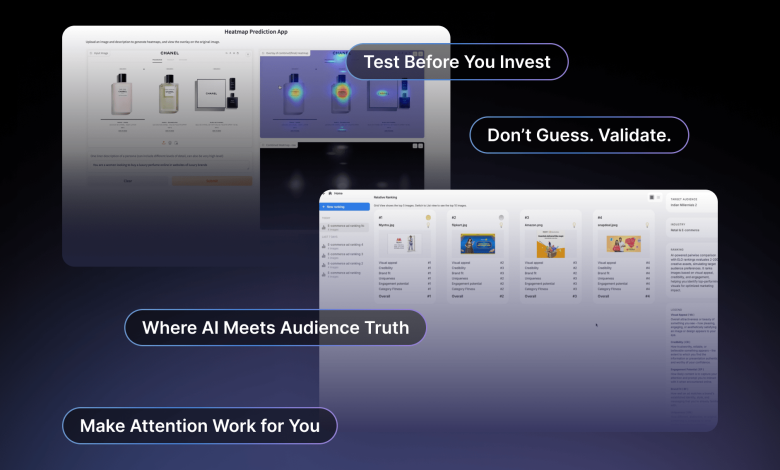
Modern marketing moves at breakneck speed. Campaigns must adapt to cultural shifts, algorithmic changes and consumer preferences that evolve every day. Yet most marketing decisions still rely on legacy methods: focus groups, surveys and panels that are slow, expensive and often outdated by the time insights are gathered.
The result? A massive experience gap. While 85% of marketers say customer experience is critical to their success, only 14% believe they excel at delivering it. And 62% of B2B marketers feel their data is too complex to derive actionable insights
We’ve reached the point where traditional research is no longer enough. To truly understand and anticipate consumer behavior, we need new tools that match the complexity and pace of modern markets. Enter AI simulations.
Simulated Communities, Real-World Insights
AI-powered simulations are creating a paradigm shift in how brands gather insights. These virtual communities, built from demographic and psychographic data, are trained on real social discourse and engage in structured activities like interviews, focus groups and surveys.
Think of it as running a 24/7 focus group that never fatigues, never needs scheduling and can pivot instantly to explore emerging trends or cultural nuances. The average cost of a standard focus group project can range from $10,000 to $30,000, making simulation a cost-effective alternative.
Rather than relying on hypothetical personas or extrapolating from small survey samples, simulations allow marketers to observe how virtual consumers behave, respond and evolve in real time. The result is deep insight generated through empathy mapping, sentiment analysis and behavioral modeling.
Consumers today are clear about what earns their trust. They expect transparency in how products are presented, authority grounded in credible endorsements and relevance through tangible benefits that connect to their daily lives. They’re tired of vague claims and glossy language.
For leaders, the takeaway is straightforward: clarity, credibility and practical value should anchor every message. Anything less risks being ignored.
Beyond Demographics: Cultural and Competitive Context
One of the most powerful benefits of simulation-based research is its ability to account for cultural nuance and competitive landscape.
Consider a campaign targeting Gen Z consumers in Southeast Asia. With traditional methods, this would require a months-long research engagement, often with limited scope. With simulated communities, researchers can run dozens of localized iterations in parallel, testing brand positioning, product messaging or pricing strategies against region-specific mindsets.
AI simulations can also integrate real-time competitor messaging. Brands can test how their campaigns stack up against rival offerings, not just in terms of perception, but in relative influence on buyer behavior.
This cultural and contextual intelligence turns abstract insights into specific, actionable decisions.
Faster, Smarter, More Inclusive
AI simulations don’t just offer better insights. They democratize them.
Traditional research tends to center on a narrow, accessible demographic: urban, digitally literate and available to participate. But with AI, we can build communities that reflect rural populations, underrepresented minorities, niche subcultures or global audiences who might be harder to reach with conventional methods.
That inclusivity also drives smarter marketing. When a brand can test a campaign across 20 simulated markets in 24 hours, it avoids costly missteps and uncovers opportunities previously untapped because of logistical complexity.
For small teams or organizations with limited research budgets, this democratization of insight is transformational. One simulation can yield feedback that would otherwise require extensive investment and coordination.
The Future of Customer Intelligence Is Generative
Generative AI isn’t just about creating content. It’s about creating context. And in the realm of market research, that context is gold.
Simulations powered by generative models allow us to replicate not only what people say, but how they say it: the hesitation in tone, the enthusiasm in emoji use, the cultural cues buried in slang or silence. These details are where decisions are won or lost.
More importantly, these AI personas can evolve. They’re not static profiles. They age, they form opinions, they get bored of your messaging. Just like real humans.
This gives marketing teams the ultimate sandbox: a place to prototype ideas, explore creative boundaries and make mistakes without consequence so the real-world campaigns that follow can land with precision and power.
AI plays a role in creating personalized customer experiences, according to 73% of marketers, and 32% of marketing organizations have already fully implemented AI into their workflows, indicating a growing shift from experimentation to embedded strategy.
Smarter Decisions, Not Just Faster Ones
While the efficiency gains from AI simulations are obvious, the true value lies in better decision-making.
When insights come from evolving, context-rich personas rather than static spreadsheets, teams begin to think differently. Campaigns are refined with precision. Language is tested for emotional resonance. Product-market fit is validated in advance rather than after launch.
This doesn’t just accelerate processes. It improves outcomes and elevates customer experience in meaningful, measurable ways.
Focus Groups Reimagined: Augmenting Tradition with AI
Traditional research methods still have a place, particularly when human moderation and interpretation are critical. But the tools we use to understand our audiences must evolve.
Clipboards, callouts and one-way mirrors belong to a previous era. In their place, we now have intelligent simulations that offer faster and better answers. AI doesn’t replace human intuition. It enhances it, with a level of scale and nuance that static tools can’t match.
As customer expectations grow and competitive landscapes shift, organizations that embrace simulation and AI-driven research will gain a critical edge in what they know and in how they can act on it.




